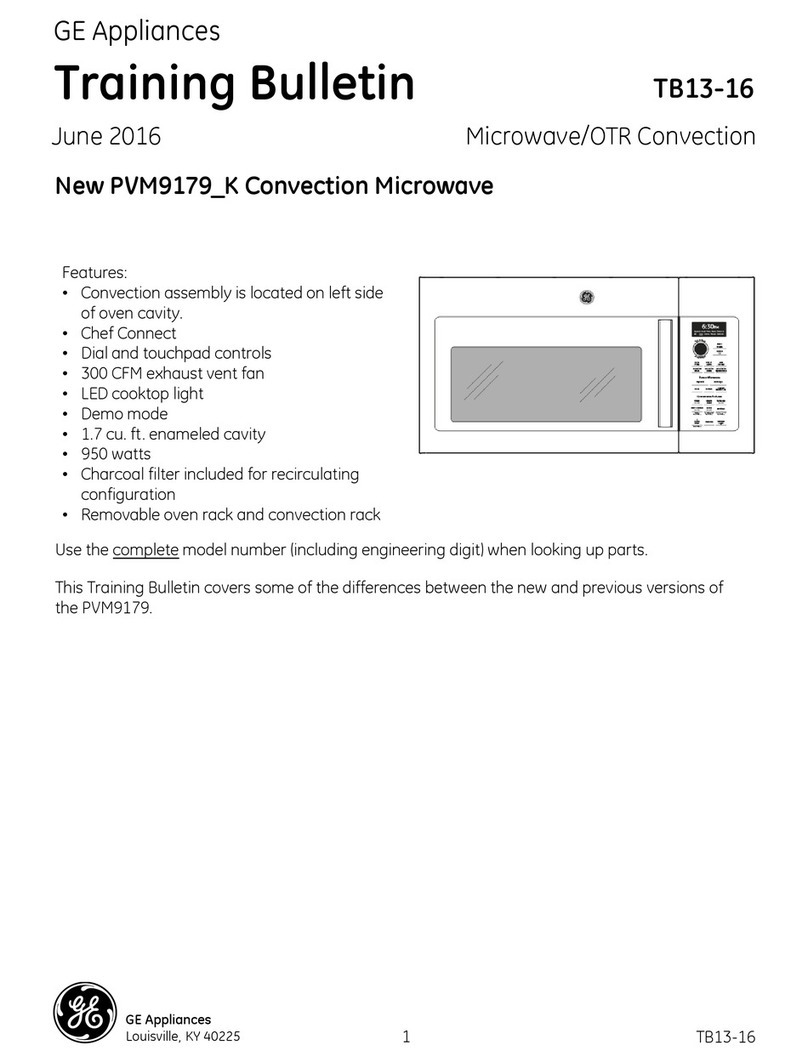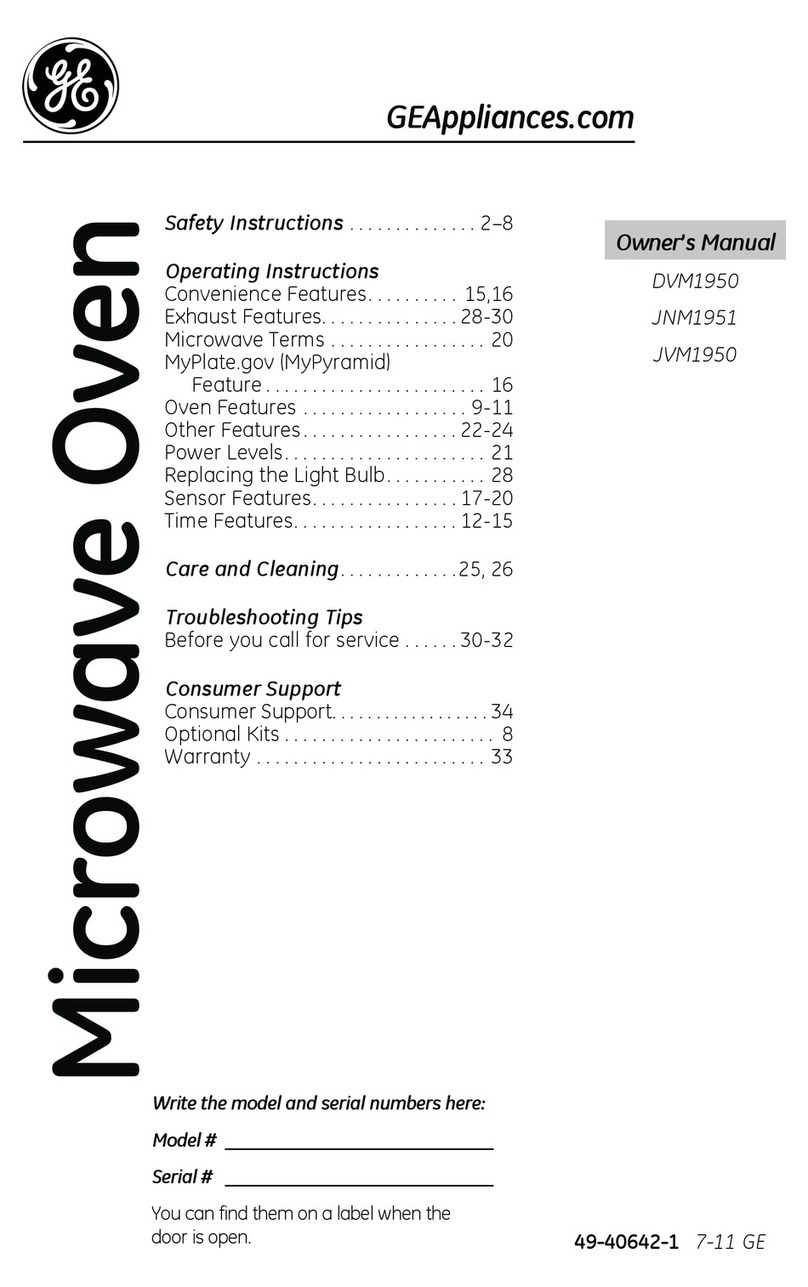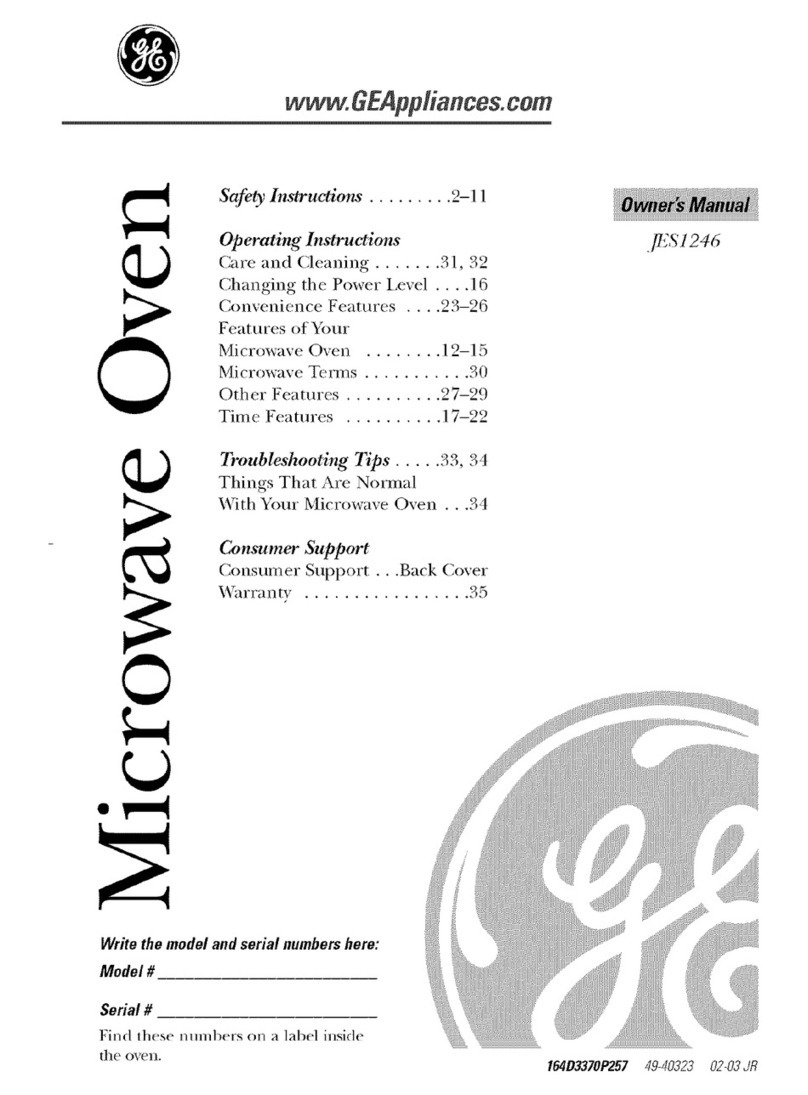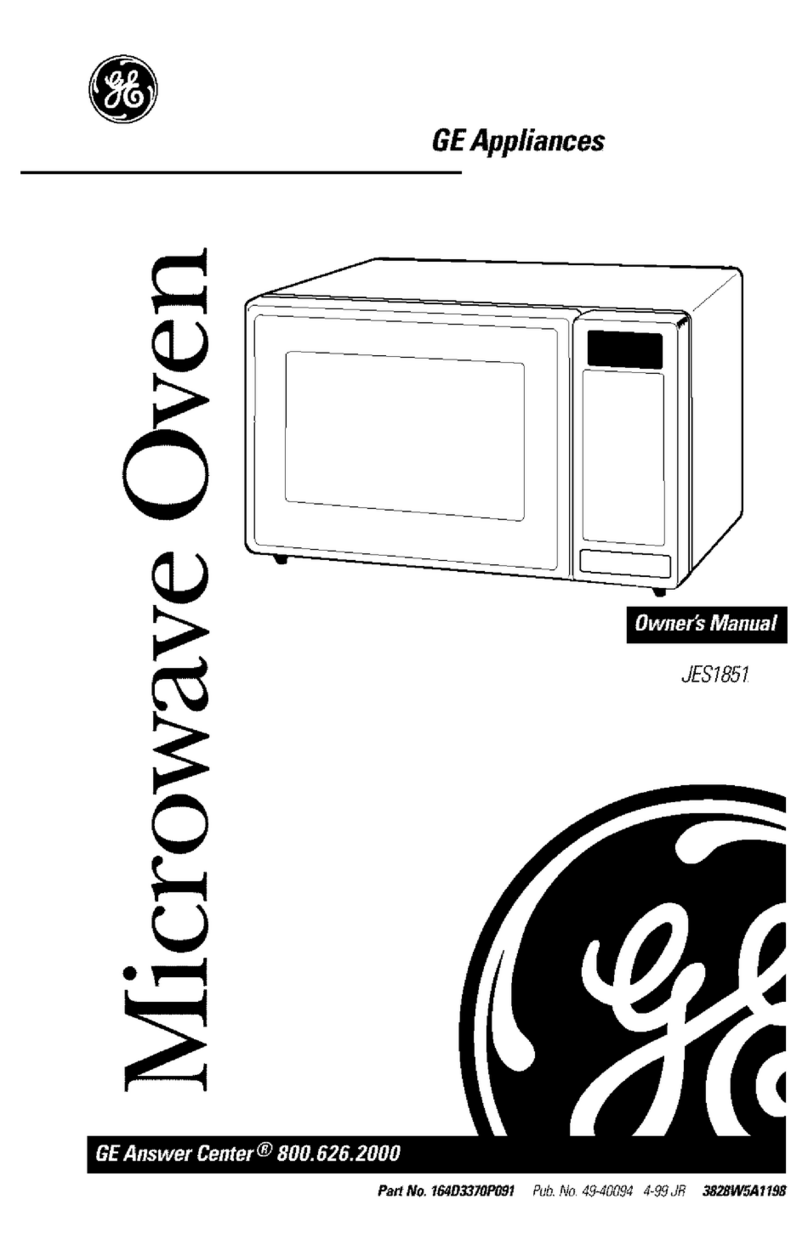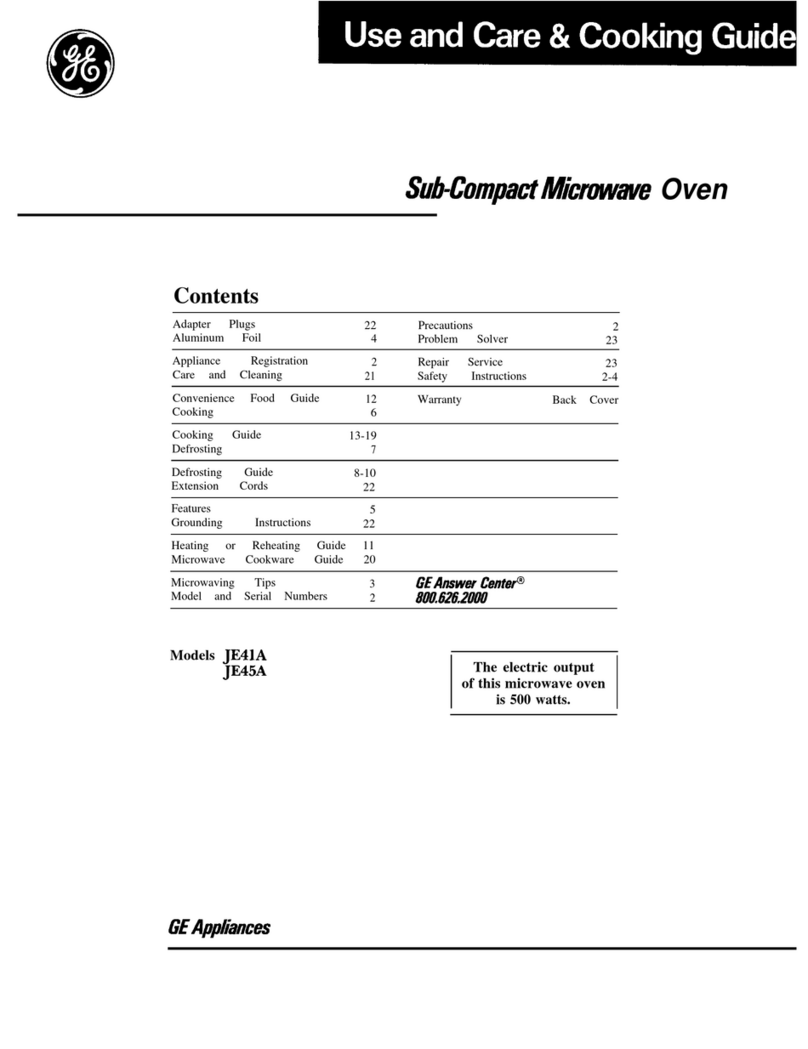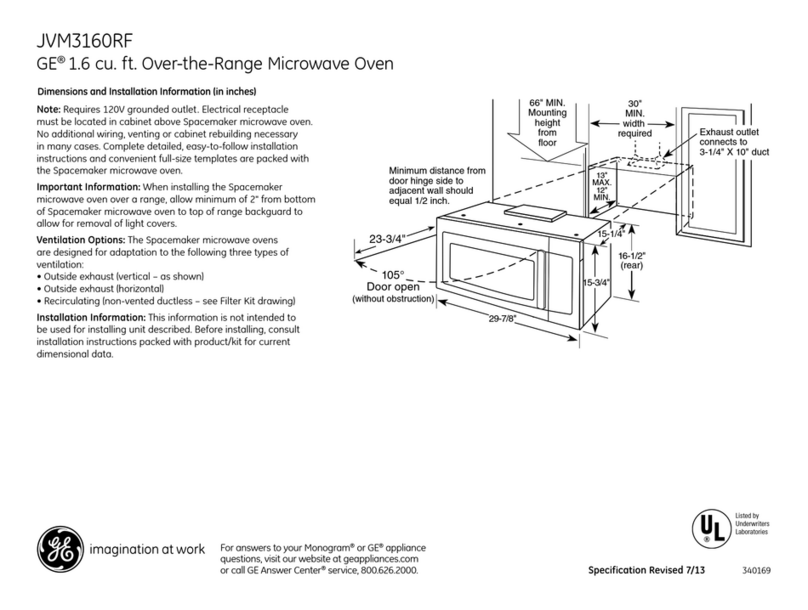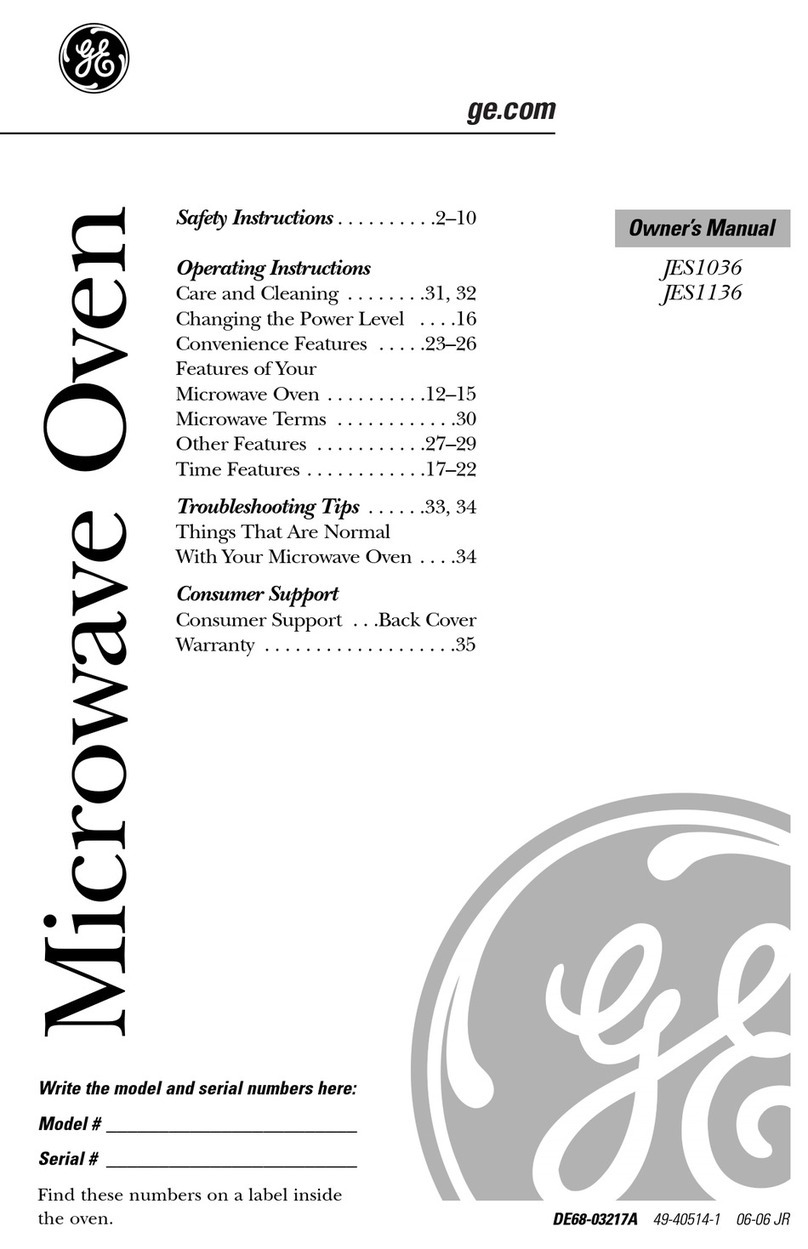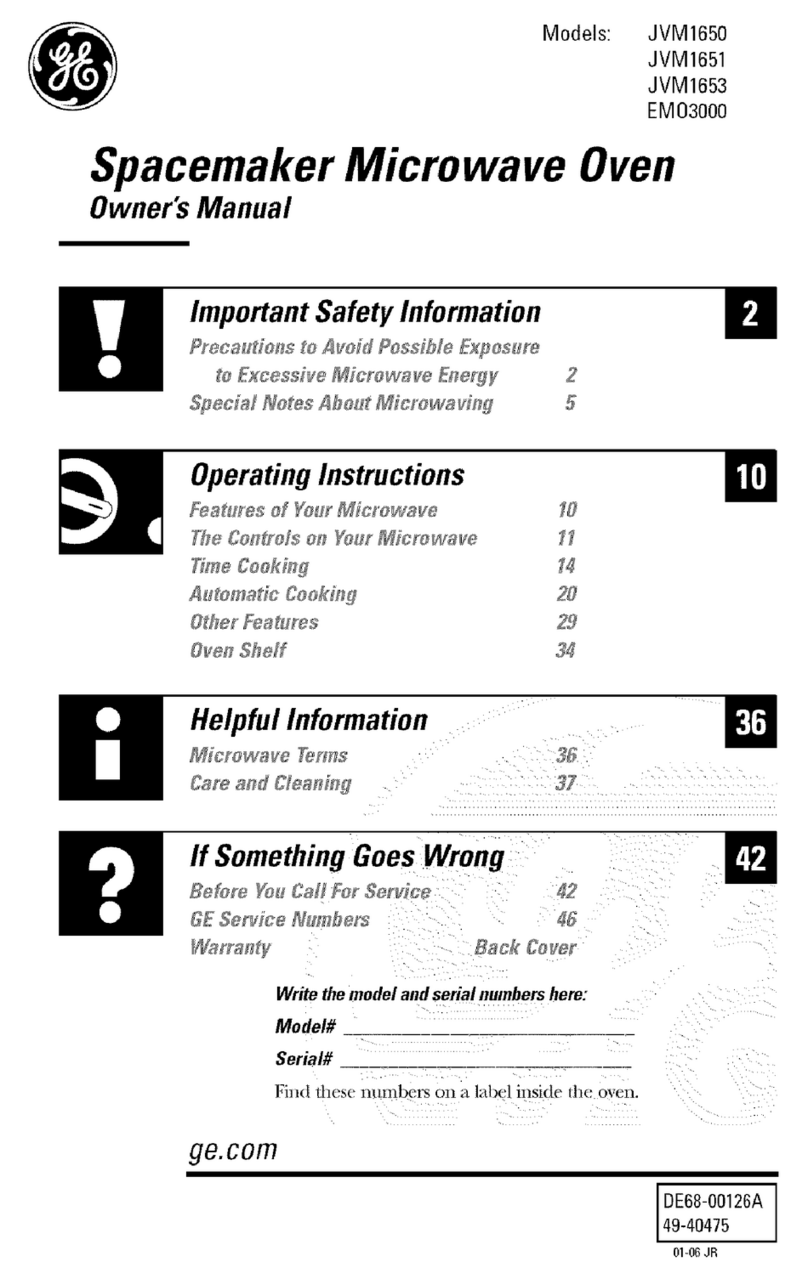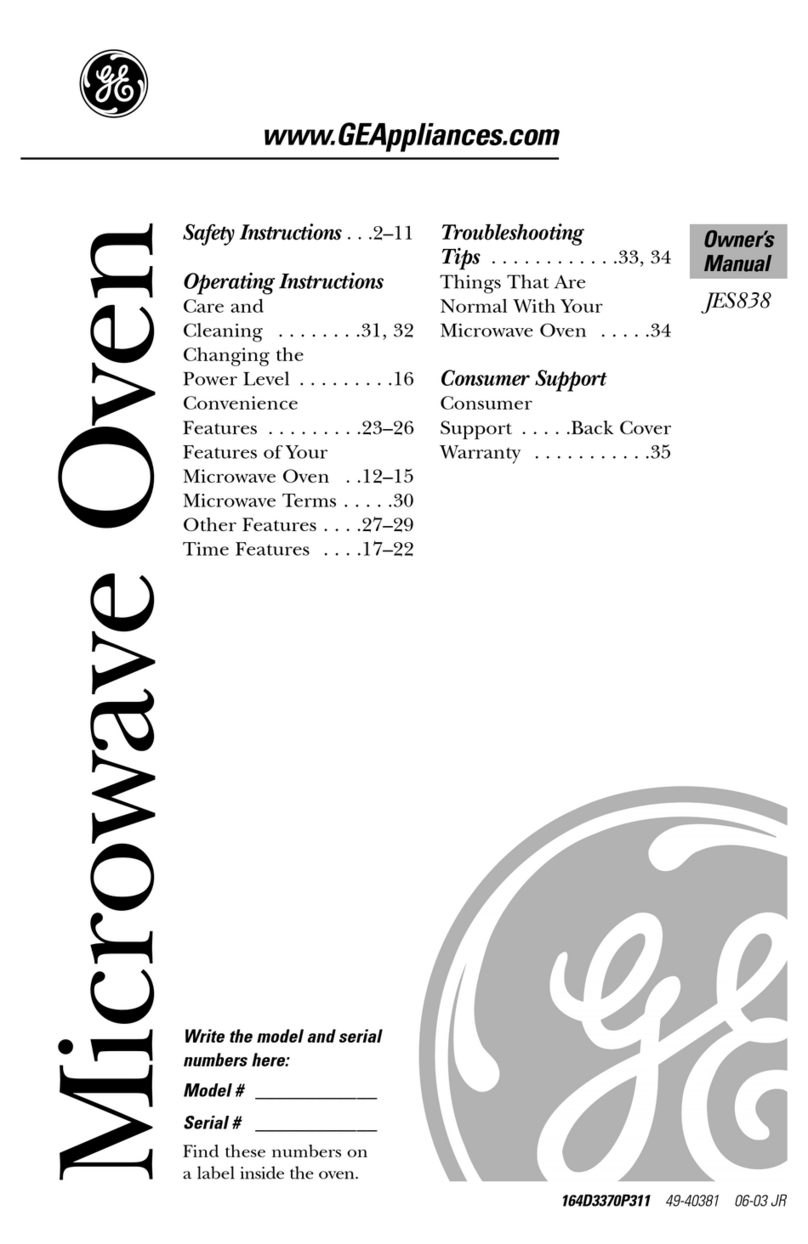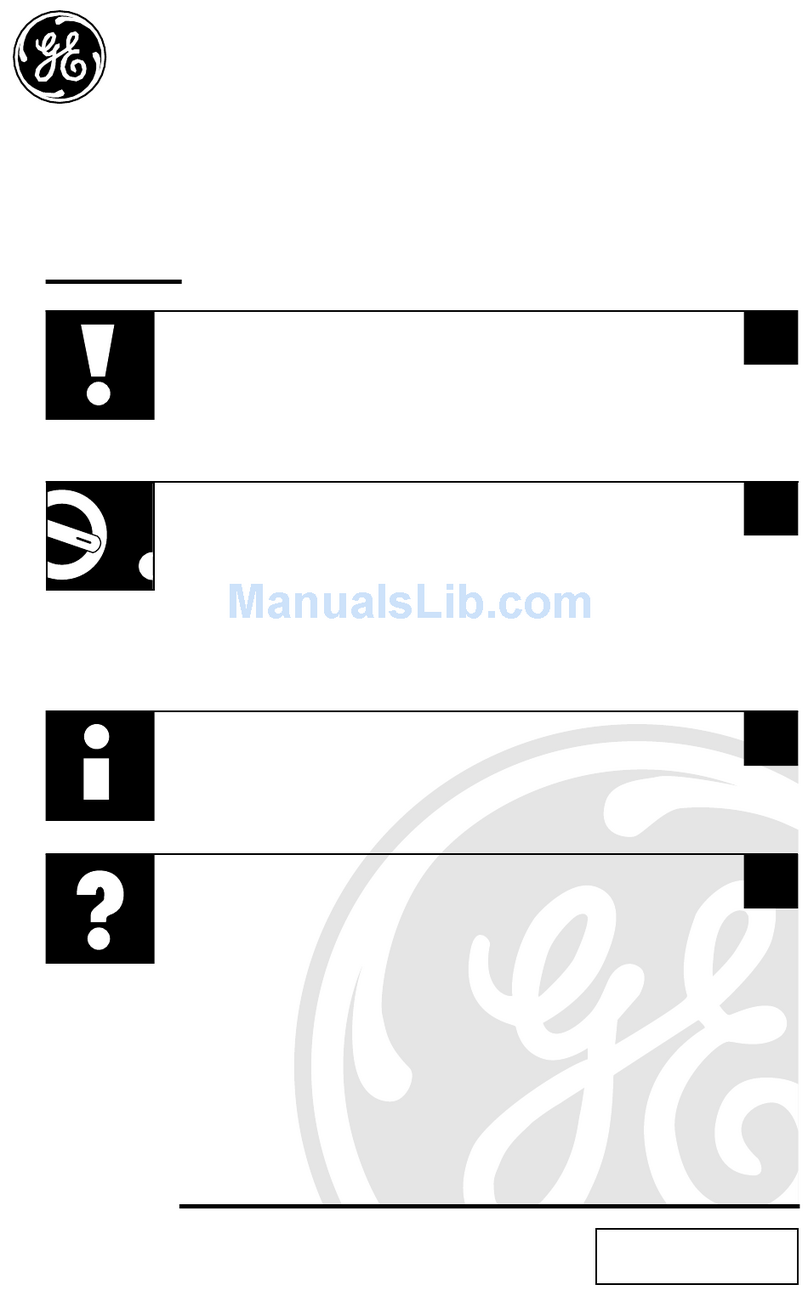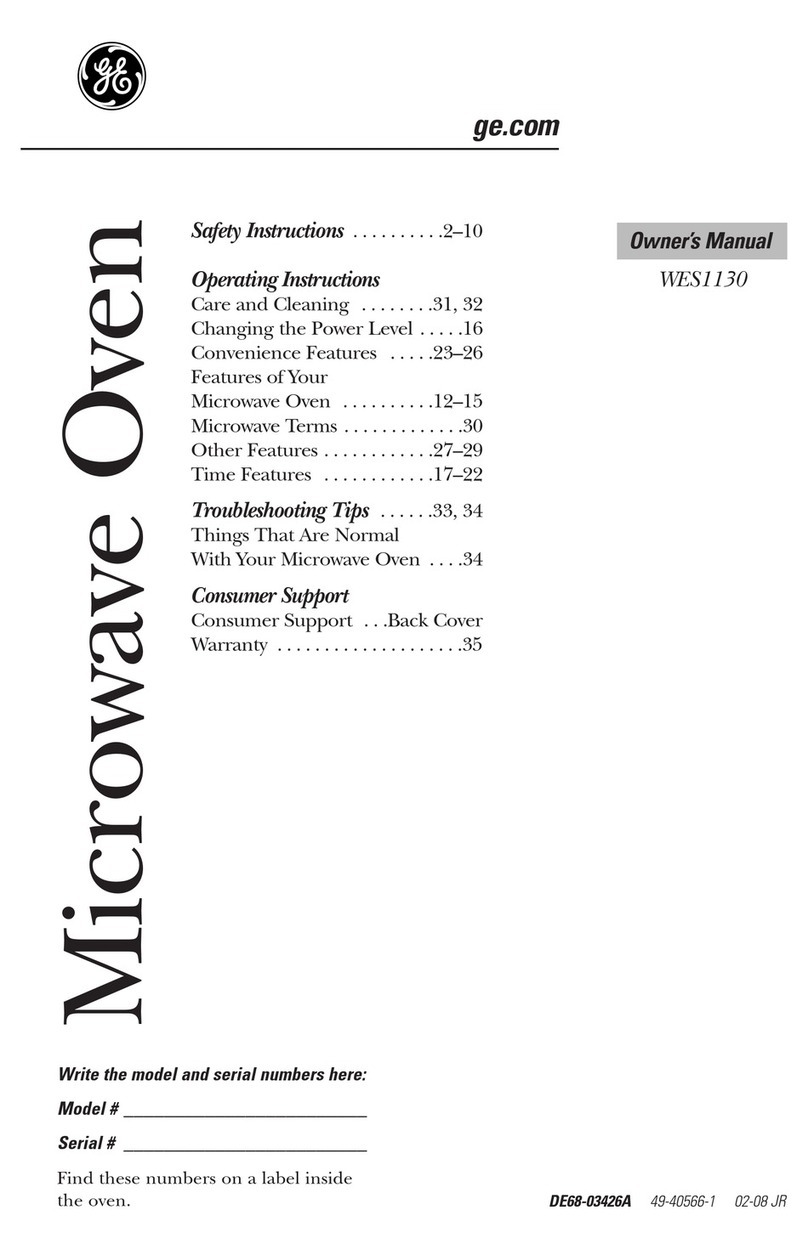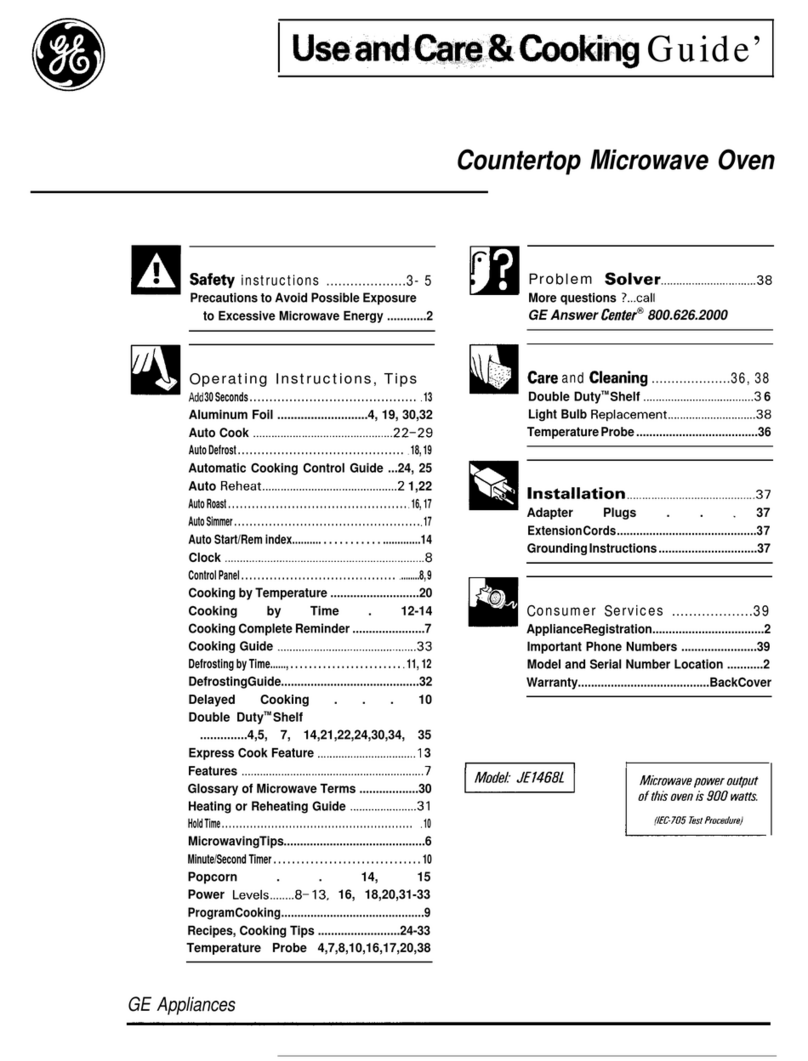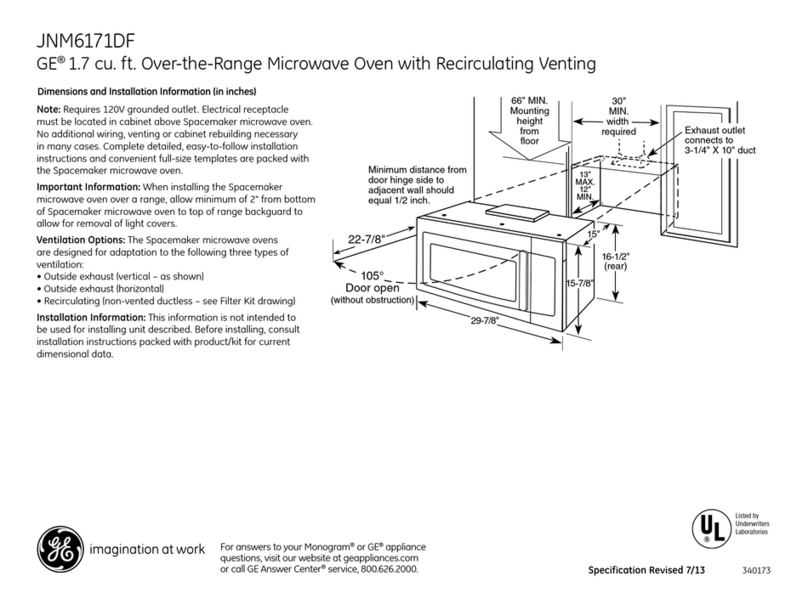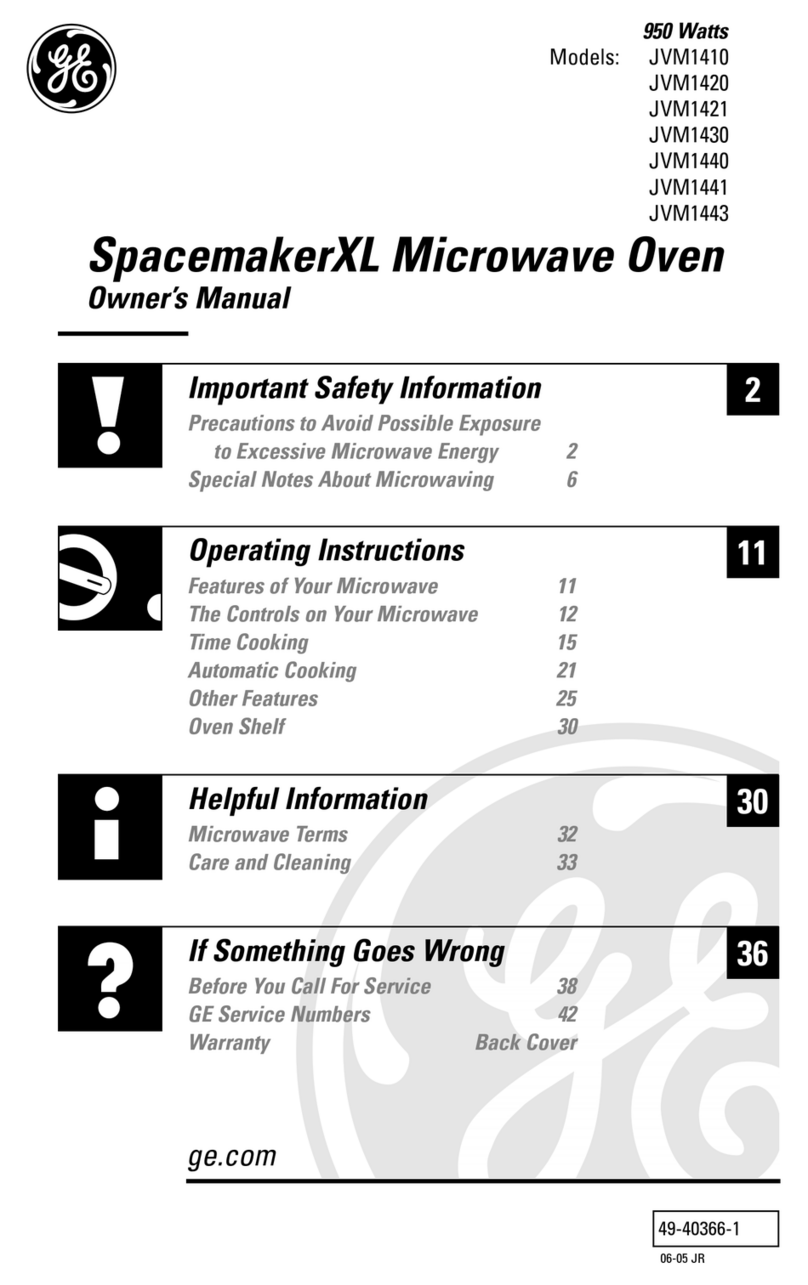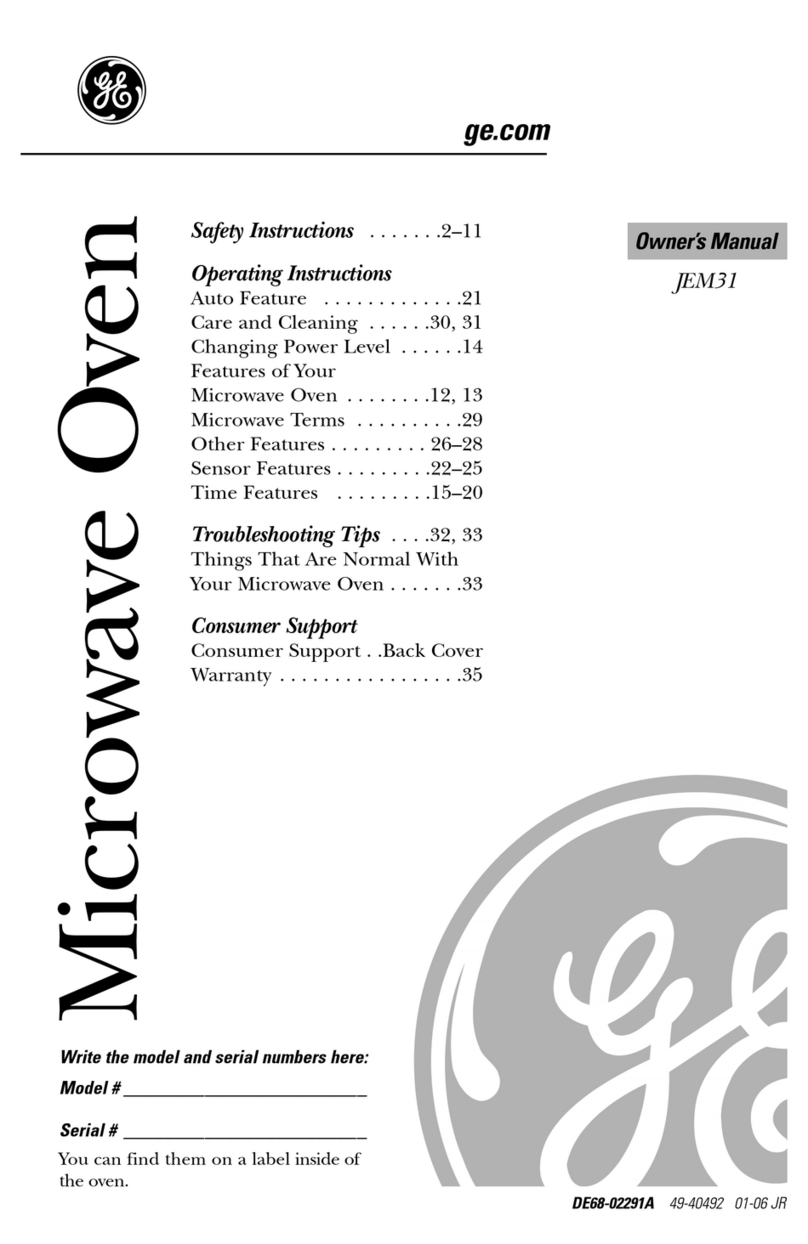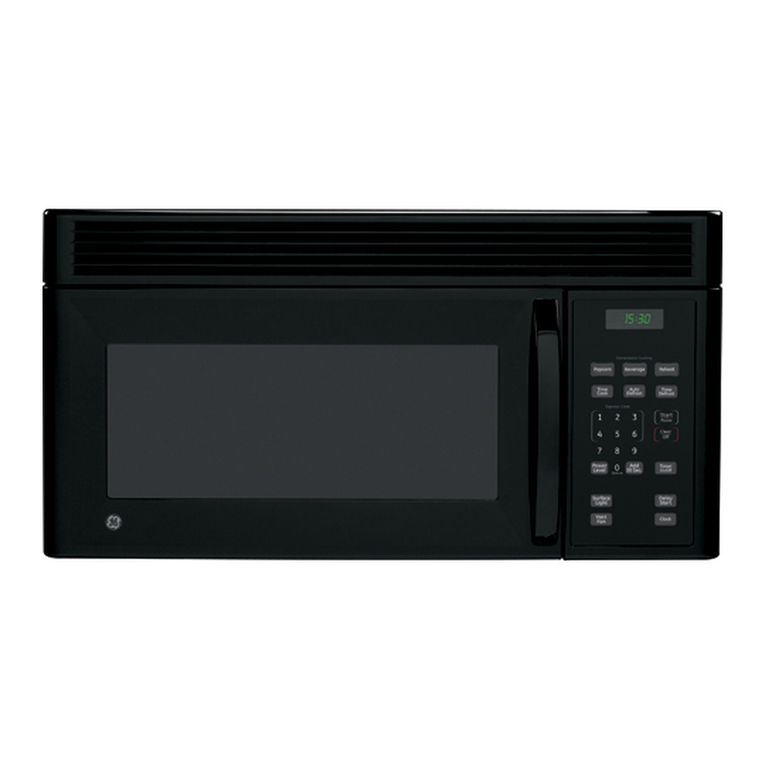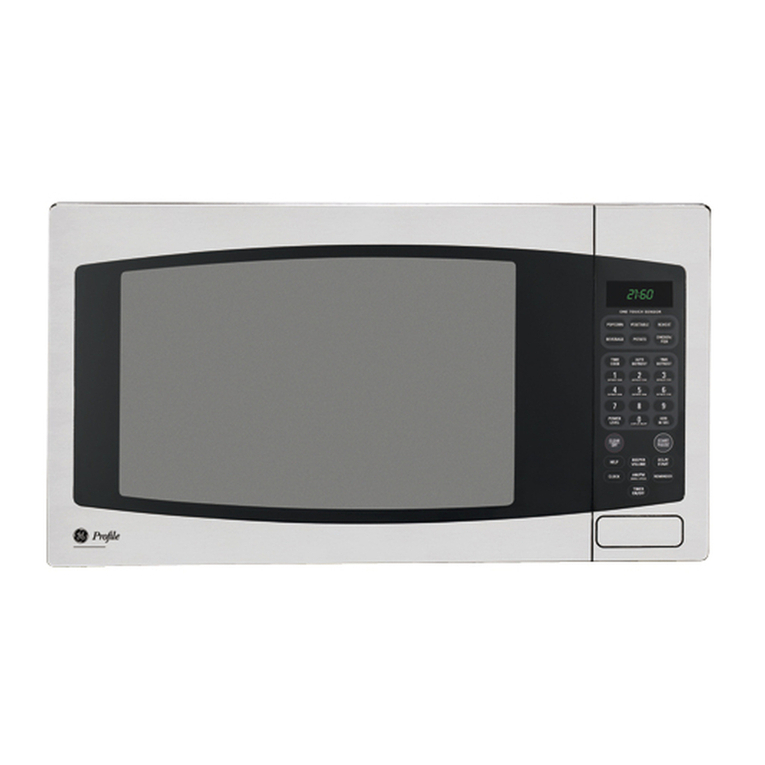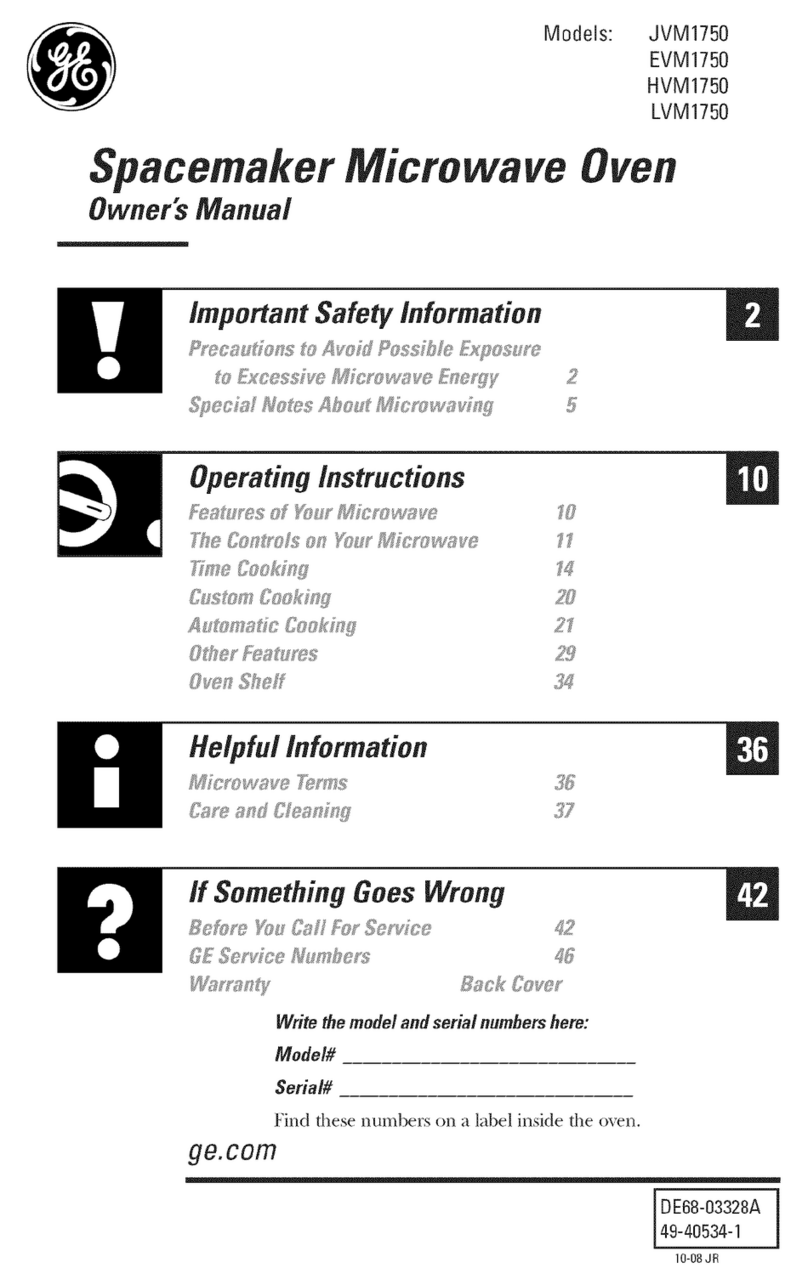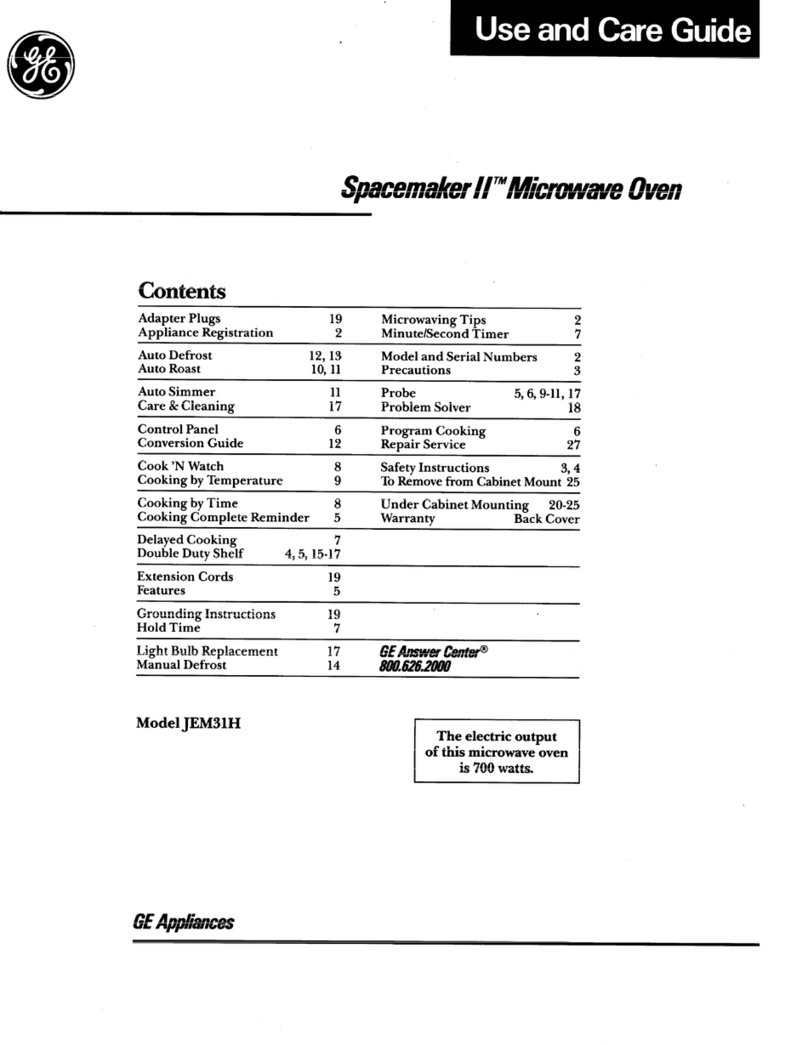
4
IMPORTANT SAFETY INSTRUCTIONS.
READ ALL INSTRUCTIONS BEFORE USING.
SAVE THESE INSTRUCTIONS
Avoid heating baby food in glass jars, even with
the lid off. Make sure all infant food is thoroughly
cooked. Stir food to distribute the heat evenly.
Be careful to prevent scalding when warming
formula or breast milk. The container may feel
cooler than the milk really is. Always test the milk
before feeding the baby.
Spontaneous boiling – Under certain special
circumstances, liquids may start to boil during
or shortly after removal from the microwave
oven. To prevent burns from splashing liquid,
we recommend the following: before removing
the container from the oven, allow the container
to stand in the oven for 30 to 40 seconds after
the oven has shut off. Do not boil liquids in
narrownecked containers such as soft drink
bottles, wine flasks and especially narrow-necked
coffee cups. Even if the container is opened,
excessive steam can build up and cause it to
burst or overflow.
Don’t defrost frozen beverages in narrownecked
bottles (especially carbonated beverages). Even
if the container is opened, pressure can build up.
This can cause the container to burst, possibly
resulting in injury.
Hot foods and steam can cause burns. Be careful
when opening any containers of hot food,
including popcorn bags, cooking pouches and
boxes. To prevent possible injury, direct steam
away from hands and face.
Do not overcook potatoes. They could dehydrate
and catch fire, causing damage to your oven.
Cook meat and poultry thoroughly – meat to at
least an INTERNAL temperature of 160°F (71° C)
and poultry to at least an INTERNAL temperature
of 180°F (82° C). Cooking to these temperatures
usually protects against foodborne illness.
If you are not sure if a dish
is microwave-safe, use this
test: Place in the oven both
the dish you are testing and
a glass measuring cup filled
with 1 cup (240 mL) of water
– set the measuring cup
either in or next to the dish. Microwave 1 minute
at high. If the dish heats, it should not be used
for microwaving. If the dish remains cool and
only the water in the cup heats, then the dish is
microwave-safe.
If you use a meat thermometer while cooking,
make sure it is safe for use in microwave ovens.
Do not use recycled paper products. Recycled
paper towels, napkins and waxed paper can
contain metal flecks which may cause arcing or
ignite. Paper products containing nylon or nylon
filaments should be avoided, as they may also
ignite.
Some styrofoam trays (like those that meat
is packaged on) have a thin strip of metal
embedded in the bottom. When microwaved,
the metal can burn the floor of the oven or ignite
a paper towel.
Do not use the microwave to dry newspapers.
Not all plastic wrap is suitable for use in microwave
ovens. Check the package for proper use.
Paper towels, waxed paper and plastic wrap
can be used to cover dishes in order to retain
moisture and prevent spattering. Be sure to vent
plastic wrap so steam can escape.
Cookware may become hot because of heat
transferred from the heated food. Pot holders
may be needed to handle the cookware.
“Boilable” cooking pouches and tightly closed
plastic bags should be slit, pierced or vented
as directed by package. If they are not, plastic
could burst during or immediately after cooking,
possibly resulting in injury. Also, plastic storage
containers should be at least partially uncovered
because they form a tight seal. When cooking
with containers tightly covered with plastic wrap,
remove covering carefully and direct steam away
from hands and face.
MICROWAVE-SAFE COOKWARE
How to test for a
microwave-safe dish.
Make sure all cookware used in your microwave oven is suitable for microwaving. Most glass
casseroles, cooking dishes, measuring cups, custard cups, pottery or china dinnerware which
does not have metallic trim or glaze with a metallic sheen can be used. Some cookware is labeled
“suitable for microwaving.”
